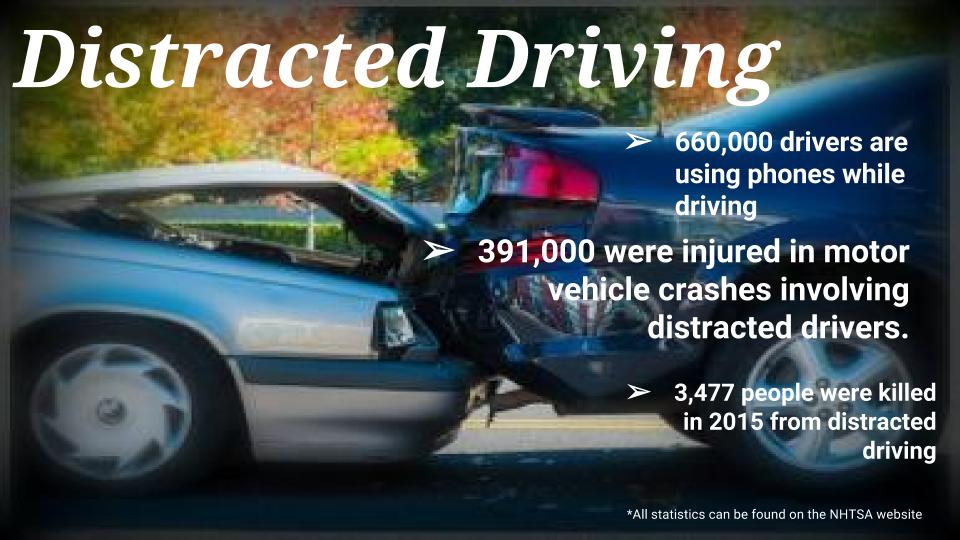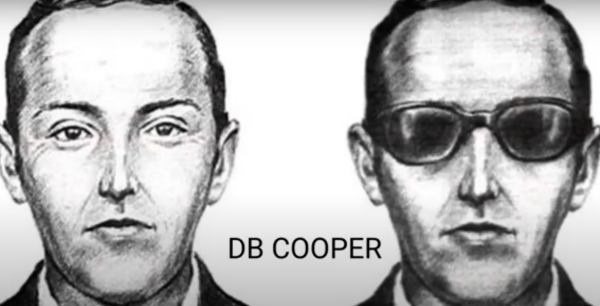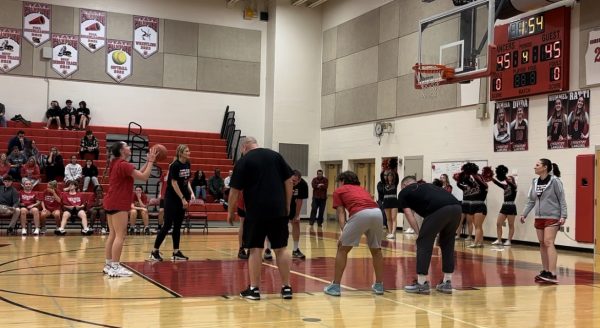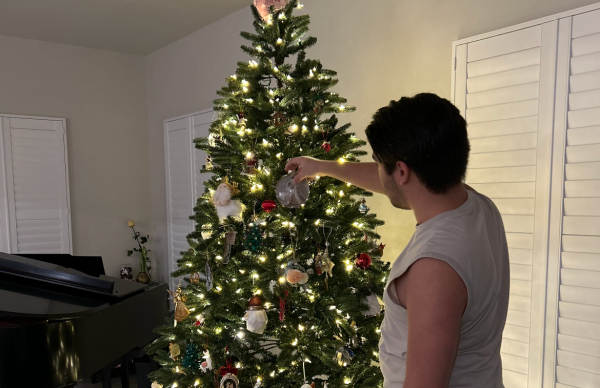Famous last words: Don’t make the last words you text be your last words on earth
April 27, 2017
One choice could take a life. Choosing to drive distracted is choosing to put lives at risk. In 2015 alone distracted driving killed 3,477 people and injured 391,000.
“If you have a phone, my best advice to you is before you start driving, lock it in the trunk. Whatever it is, it can wait,” said Deputy Tim Calimer, School Resource Officer.
April is Distracted Driving Awareness Month. The definition of distracted driving has been updated to focus on teens who text and drive. The National Highway Traffic Safety Administration (NHTSA) states that when driving 55 mph, glancing at the phone for 5 seconds is like driving across a football field with your eyes closed.
To help limit distracted driving, the National Safety Council (NSC) and NHTSA have posted YouTube videos explaining the dangers of driving and texting. The NSC has created a whole program that helps businesses reduce cell phone use in offices. Less reliance on cell phones will change their use driving and prevent employee crashes.
The NHTSA has multiple campaigns and pledges set up to stop distracted driving. They focus on ways to change the behavior of drivers through legislation, enforcement, public awareness, and education. One Text or Call Could Wreck It All, Phone In One Hand – Ticket In The Other, and U Drive. U Text. U Pay, are their three top campaign slogans.
For teens, distracted driving is an even greater danger. Because new teen drivers have the highest crash fatality rates of all drivers, it’s critical that they develop good driving habits that are distraction-free right from the start.
“After hearing a lot of crashes on the news, I’m not too big of a fan of driving. It scares me to think that with one decision I make, I could hurt someone or even myself,” said Class of 2018 member India Pack.
Along with the campaign slogans, Geico Insurance has come up with ways to help prevent distracted driving among teens and adults. They say to try use a cell phone only for emergency situations. Social conversations on cell phones should not be carried on while driving, and if you are drowsy, pull off the road. Drowsiness increases the risk of a crash by nearly four times. Teens should limit the number of passengers, as well as the level of activity inside the car, and avoid eating while driving. Being busy is no excuse for distracted driving. Lastly, do multi-tasking outside the car.
“When I drive, I make sure my phone is turned off. My motto is out of sight, out of mind. This helps me make sure my full attention is on the road,” said sophomore Matthew Gelhard.
Make driving safer by making people aware of the dangers of distracted driving. Put the distractions away and drive focused on the road. The safety and lives of people is more important than any text or phone call. Next time you pick up the cell phone while driving think. “Is this really the risk I want to take?”













